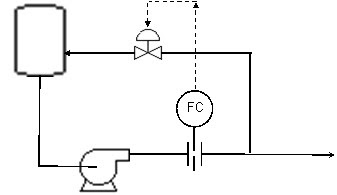Hi,
I have a query regarding the control of pump minimum flow lines. We have a flow transmitter at pump discharge and a control valve on the min. flow line. The control is set such that as soon as min. flow is seen by the transmitter (around 90gpm) the control valve will open and recirculate the flow back to the tank.
My question is when the control valve opens to recirculate the flow, how much flow will go in the main line? or is it assumed the min. flow will come only when the main line is blocked and pump goes back on its curve?
What action needs to be taken when there is min. flow condition?
Now, if we assume that the blockage downstream is opened..how will the control valve start to close?
Rs

Edited by rs20170808@gmail.com, 23 October 2018 - 08:34 PM.

 FB
FB












